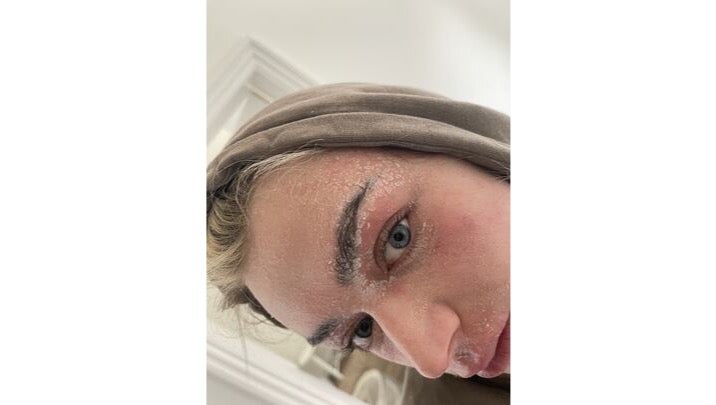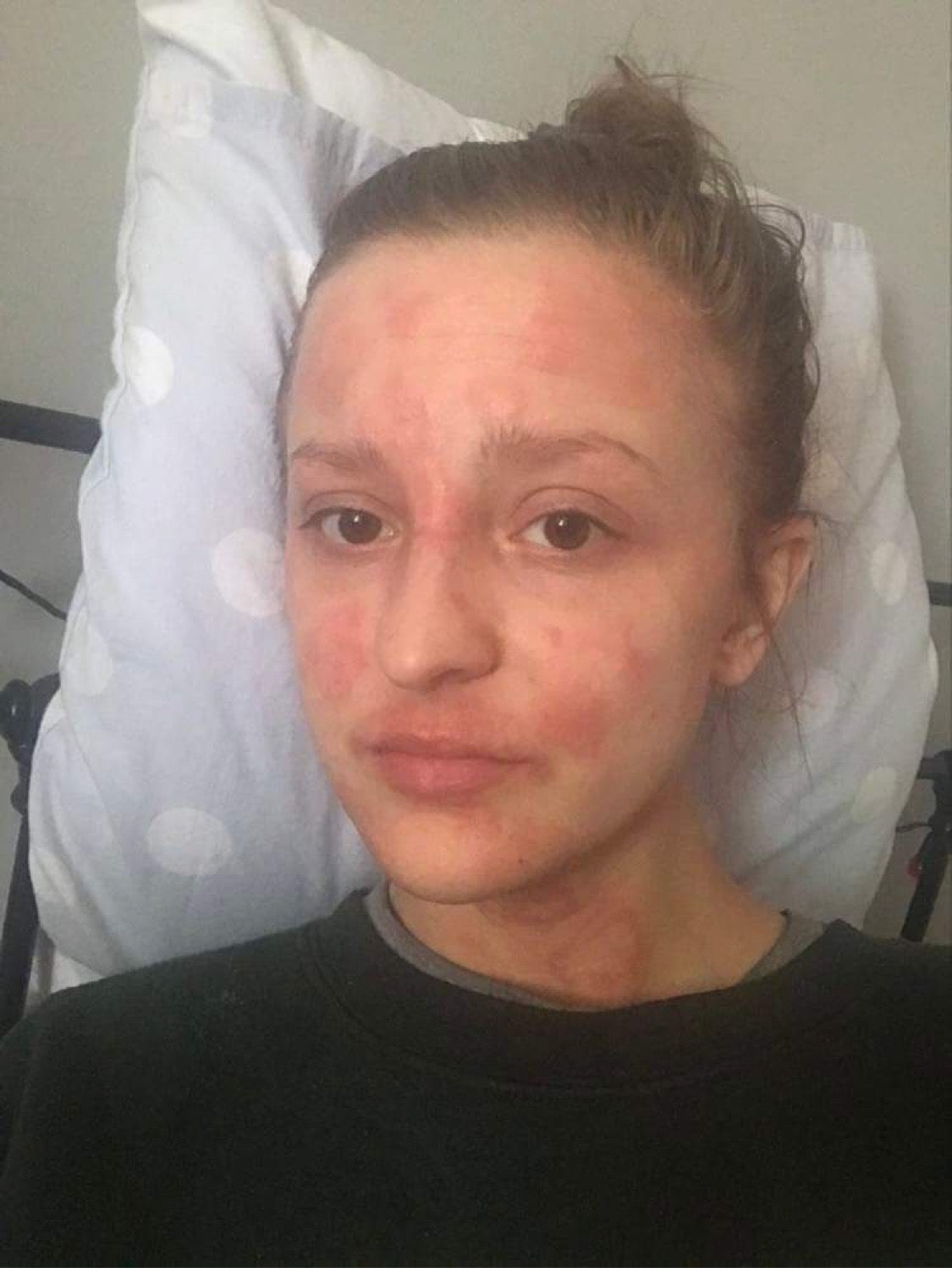‘I didn’t want to be here anymore’: The agony of women suffering with topical steroid withdrawal
The condition is caused after the repeated use of steroid creams and tablets commonly prescribed by the NHS, Holly Evans writes


Your support helps us to tell the story
From reproductive rights to climate change to Big Tech, The Independent is on the ground when the story is developing. Whether it's investigating the financials of Elon Musk's pro-Trump PAC or producing our latest documentary, 'The A Word', which shines a light on the American women fighting for reproductive rights, we know how important it is to parse out the facts from the messaging.
At such a critical moment in US history, we need reporters on the ground. Your donation allows us to keep sending journalists to speak to both sides of the story.
The Independent is trusted by Americans across the entire political spectrum. And unlike many other quality news outlets, we choose not to lock Americans out of our reporting and analysis with paywalls. We believe quality journalism should be available to everyone, paid for by those who can afford it.
Your support makes all the difference.Rhiannon Kennedy-Chapman’s early twenties could hardly be described as the best years of her life. Covered in grazes, open sores and dry skin, she was at a loss as to why her body was continuously failing her, despite her efforts to follow medical advice and take her steroid medication.
After breaking out in red rashes in 2020, the next few years would be punctuated with hospital visits, dermatology appointments and long baths to try to soothe her itching skin.
Having used both steroid cream and oral tablets since suffering from eczema as a child, she had little concern about the medication when she was once again prescribed it for small patches of eczema.

“It worked for a bit and then it would stop working. The GP would give me a higher dose and the pattern went on for many months. I went through four different strengths – it would work for a short period of time and when I stopped using it, it would come back even fiercer.
“The GP just didn’t know what to do with me and told me to keep using the steroids as I was suffering from severe eczema.”
Little did she know that she was suffering from topical steroid withdrawal (TSW), a rare skin condition caused by the repeated use and cessation of steroid creams.
The National Eczema Society classifies TSW as “severe reactions” that can occur when moderate or high-potency topical steroids are stopped after prolonged use, with patients experiencing worse symptoms than their original condition.
Listed side effects include acne, perioral dermatitis, redness, swollen glands and severe eczema.
In a joint statement with the British Association of Dermatologists, the eczema society states: “Adverse effects can result from daily use of high-strength topical corticosteroids (TCS) over a long period (usually more than 12 months).
“The terms Red Skin Syndrome and Topical Steroid Addiction are used to describe several different medical conditions that can result from excessive TCS use.”

But for sufferers like Ms Kennedy-Chapman, TSW isn’t a minor skin issue or “a bit of eczema”.
“There are no words to describe it, but just try and imagine an itch that is so deep it’s touching your bones, endless nights with no sleep spent crying, bed sheets full of flakes, oozing and blood, a ballooned face, arms and legs feeling like they are on fire,” she says.
“So much hair loss you feel exposed, unhealthy amounts of weight loss, and last but not least, severe depression. My emotional well-being plummeted, and relationships crumbled, as I didn’t recognise the person in the mirror. I didn’t want to be here anymore.”
Despite the pain and discomfort it causes, information about the condition is scarce and it is often overlooked by GPs and dermatologists as simply a “self-diagnosed” issue.
In a bid to raise awareness, Holly Broome co-founded the patient advocacy group Scratch That, an online resource centre that encourages others to share their experiences of TSW.
During her early 20s, she began suffering extreme rashes while taking steroid cream. They left her barely able to walk around the house and she was forced to move home to her parents for two months.

“I had it from head-to-toe and each night I was wrapping myself in bandages and having to peel myself out of bed,” she said. “A day or so after I was taken down to the low-potency steroid cream, the skin on my back all came off in one night. It just peeled off.”
After reading about TSW in a book, she connected with others online and decided to set up a platform for other patients to encourage engagement from the scientific and health community.
“With TSW, patients often feel like they’re being blamed for their own condition,” she said. “Doctors often say ‘with the appropriate use, you wouldn’t go through TSW’ but they’re the ones prescribing the drug. There are no proper instructions for taking topical steroids.”
A 2021 report by the Medicines and Healthcare Products Regulatory Agency (MHRA) gave guidance on the risks of TSW and it is now included as patient information for all prescribed topical steroids.
Patients can now also report their suspected reactions to topical steroids via the MHRA’s “yellow card scheme” and eczema charities have called for further research into the causes and long-term effects of TSW.

Andrew Proctor, chief executive of the National Eczema Society, said it was calling on the UK medicines regulator, the MHRA, to introduce clearer strength and potency labelling of topical steroids to support their safe and effective use.
“This change needs to happen and is supported by patients and healthcare professional bodies,” he said.
While one private clinic in Winchester does provide treatment for TSW, its waiting lists are currently frozen due to being inundated with patients. This has led some patients to travel abroad in search of a solution.
This includes Evie Guttridge, who is trying to raise £6,000 to support her Cold Atmospheric Plasma Therapy (CAPT) treatment in Thailand after enduring years of agony due to her debilitating skin condition.
Known as CAPT, it is commonly used to heal chronic wounds but has a high success rate with TSW as it promotes the proliferation rate of cells to heal irritated skin.
“TSW has completely turned my life upside down,” she said. “It’s impacted every single part of my life, my career, my relationships.
“The mental impact has been immense as well as the physical impact. I wasn’t able to move out of my home, I had to put my career [as an actress] on hold and just day by day, living like a normal human started getting harder and harder.
“It’s affected every part of my life. It’s taken my identity away and you get pain and anxiety alongside it because you don’t know how long the flares will last. You’re just hoping every moment that the pain will go away and it will get better but it’s really really difficult.”

Ms Guttridge first began using steroid cream at the age of 17 after suffering from light patches of eczema. She was prescribed a low-potent steroid cream and it went away but it returned within a few weeks stronger and started spreading – and continued for six years.
“They were having to give me higher potent steroids each time until none of them worked anymore and it was completely out of control.”
She later discovered through her own research that she was suffering from TSW and despite trying light therapy, immunosuppressants and even using mouldy goat’s milk to try to ease the condition, she has decided to seek treatment abroad.
For Ms Kennedy-Chapman however, a light has begun to appear at the end of the tunnel as she marks 15 months since she last needed steroid medication. Her skin has begun to clear and she is currently fundraising to climb Kilimanjaro next March to raise money for ITSAN, a US-based charity that helps TSW patients.
“For me, it’s about getting the word out there. It’s not about scaring people not to use steroids, they saved my life as a child with asthma but to make people aware this could be a symptom they experience if they’re misused,” she said.
A spokesperson for the NHS advised anyone suffering a side effect from topical steroids to report it via the yellow card scheme.



Join our commenting forum
Join thought-provoking conversations, follow other Independent readers and see their replies
Comments